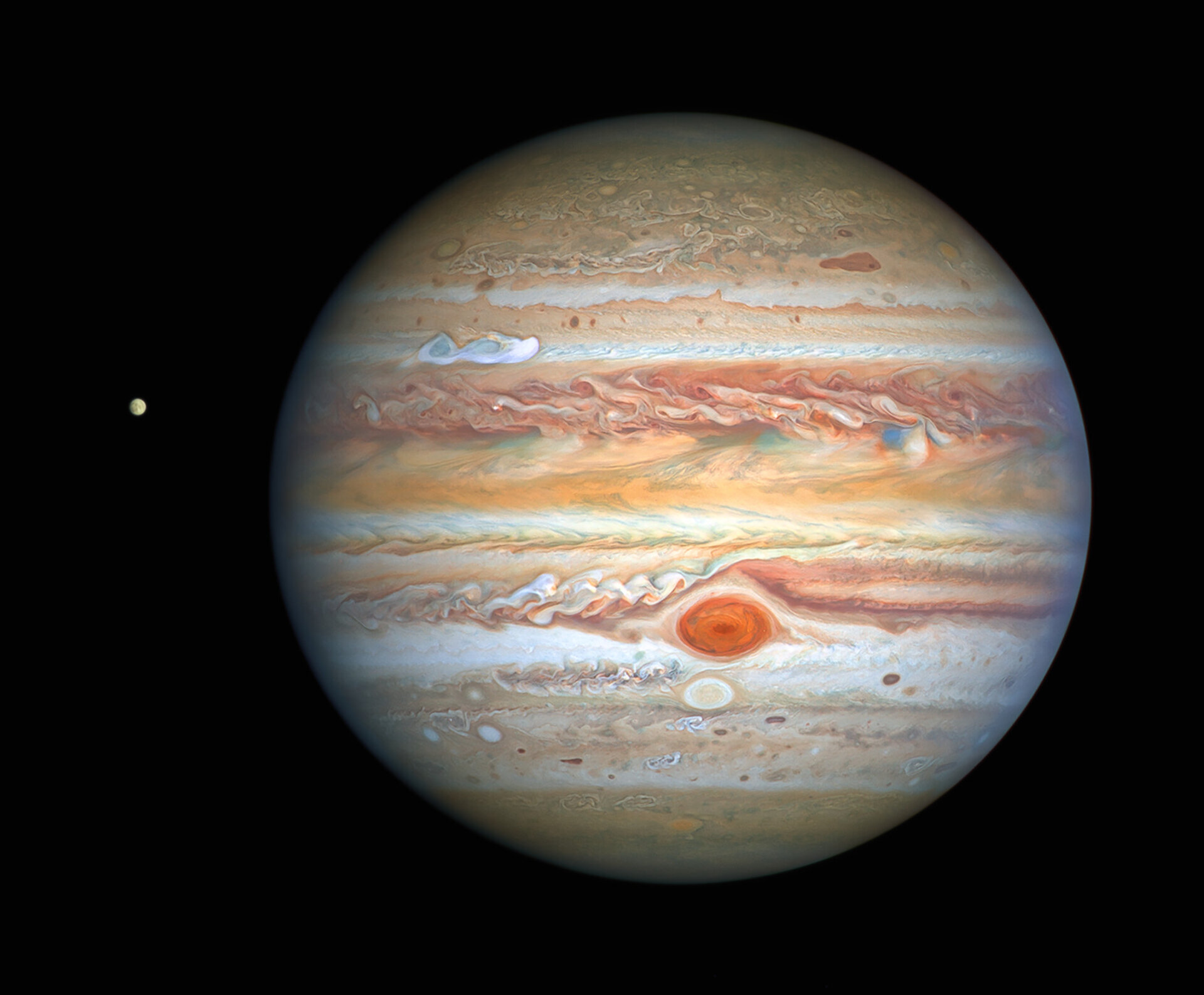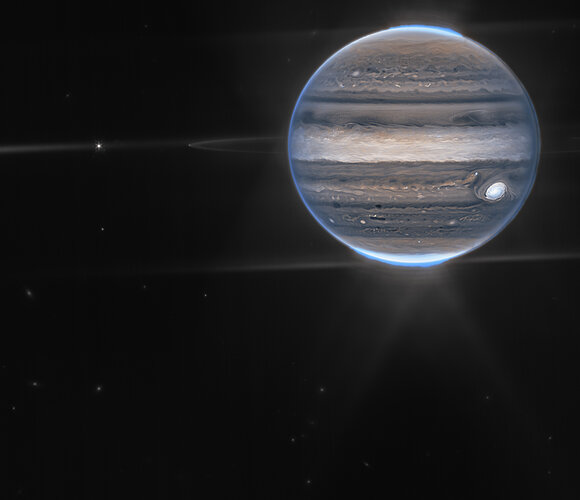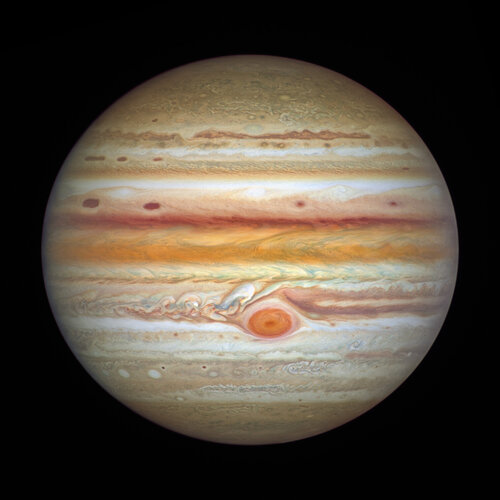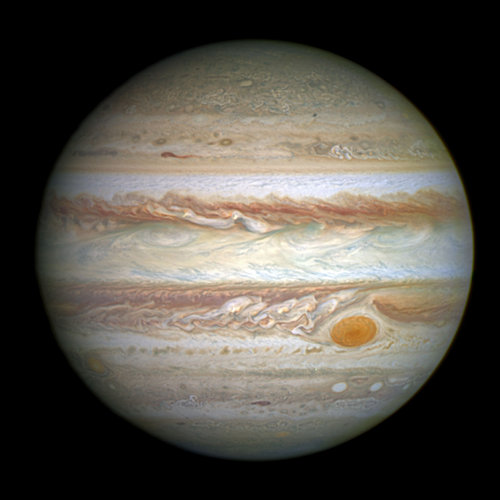Facts about Jupiter
Quick-look facts about Jupiter: the largest gas giant in the Solar System
Diameter: 142 984 km (11 times that of Earth)
Mass and volume: Jupiter is more than twice as massive as all other Solar System planets combined, and 318 times as massive as Earth. 1321 Earths could fit within a Jupiter-sized sphere.
Surface area: Just under 61.5 billion square kilometres (312 times that of Earth)
Gravity: 24.79 m/s2 (2.5 times that of Earth)
Density: 1.326 kg/m3 (0.24 times that of Earth)
Average distance from the Sun: 5.2 times the Earth-Sun distance
Length of day: 9.93 hours
Length of year: 11.86 Earth years
Average temperature: Approximately -110°C at an atmospheric pressure of 1 bar (an arbitrarily defined ‘surface’ for Jupiter where surface pressure matches that of sea level on Earth – this is 125 degrees colder than Earth’s mean sea level temperature).
Atmosphere: Jupiter has the largest planetary atmosphere in the Solar System, composed of mostly hydrogen (approx. 90%) and helium (10%), with minor amounts of methane, ammonia, and other trace gases and aerosols.
Moons: 92; the four largest are known as the Galilean moons (Io, Europa, Ganymede and Callisto). 12 of these 92 moons were discovered as recently as February 2023. Jupiter’s largest moon is Ganymede – a truly unique world that will be a key focus for ESA’s Juice mission.
Rings: While not as visible as those around its neighbour Saturn, Jupiter has a faint four-part system of dusty rings (a ‘main’, a ‘halo’ and two ‘gossamer’ rings). This ring system is thought to be replenished by material provided by the small moons Amalthea, Thebe, Metis and Adrastea (something ESA’s Juice mission will explore in more detail).
Impressive features: Jupiter experiences giant storms, powerful winds, aurorae, and extreme temperatures and pressures. The Great Red Spot is a high-pressure storm that has been raging for several centuries: its winds swirl rapidly, hitting speeds of up to 680 km per hour (over three times as fast as the most powerful hurricanes ever recorded on Earth). The spot is found in Jupiter’s southern hemisphere and appears to be shifting and shrinking, although it is still larger than Earth.
Our exploration of Jupiter: Jupiter has been explored since the 1970s via flybys and orbits by NASA’s Pioneer and Voyager programmes, the ESA/NASA Ulysses probe, the NASA/ESA/ASI Cassini-Huygens mission, NASA’s New Horizons probe, and NASA’s Galileo orbiter (Galileo being the only dedicated Jupiter explorer, and only one to orbit the planet prior to NASA’s Juno probe). Juno is the only mission currently operating at Jupiter, having launched in 2011 and entered orbit around the planet in 2016. ESA’s Jupiter Icy Moons Explorer (Juice) will arrive at Jupiter in 2031 just after NASA’s Europa Clipper arrives in 2030, which aims to study Jupiter’s moon Europa. Read more about our exploration of Jupiter.
…and just some of the ‘unknowns’ Juice will explore:
- Three of Jupiter’s icy moons have putative oceans beneath their crusts. What are these ocean worlds like – how deep are their oceans, and what is their composition?
- Ganymede is the largest moon in the Solar System, larger than both Pluto and Mercury, and the only one to have an intrinsic magnetic field. Why is this moon so unique?
- Did life ever emerge in the Jupiter system? If so, where and when, and could it be there today?
- How does Jupiter’s complex space environment shape its surroundings?
- How do Jupiter and its moons interact – and how do the moons interact with one another?
- What are gas giant planets like? For instance, what processes drive Jupiter’s weather, chemistry and climate, and how does this change over time on a typical giant planet?
- Can we study Jupiter as a model for gas giant systems across the cosmos?









